The Machen Era: Impact on UF Health
Bernie and Chris Machen arrived in Gainesville to lead the University of Florida on January 5, 2004. Their impact has been transformational — for the university, the community of Gainesville, the state of Florida and beyond.
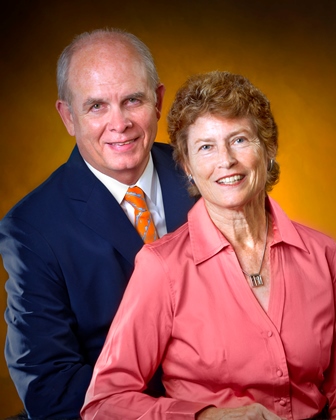 In recent weeks, at many events honoring the Machens, and in various media outlets, much has been said and written about President Machen’s leadership and accomplishments, and Chris Machen’s multifaceted service to the university and community. Understandably, most of the focus has related to broad UF initiatives such as the Bernie and Chris Machen Florida Opportunity Scholars program, enhancement of diversity and inclusiveness, the UF preeminence initiative, facility expansion, fundraising, sustainability, core educational experiences for undergraduates and other programs initiated under the Machens’ leadership that will no doubt continue to blossom over time.
In recent weeks, at many events honoring the Machens, and in various media outlets, much has been said and written about President Machen’s leadership and accomplishments, and Chris Machen’s multifaceted service to the university and community. Understandably, most of the focus has related to broad UF initiatives such as the Bernie and Chris Machen Florida Opportunity Scholars program, enhancement of diversity and inclusiveness, the UF preeminence initiative, facility expansion, fundraising, sustainability, core educational experiences for undergraduates and other programs initiated under the Machens’ leadership that will no doubt continue to blossom over time.
Not as much has been mentioned, however, about the impact of Bernie and Chris Machen on UF Health. It is the purpose of this issue of OTSP to provide a glimpse into their profound influence on UF Health, at least for the last five and a half years since I’ve been here.
First, let’s consider governance. It was Bernie’s decision in 2009, with support of the UF Board of Trustees, to delegate his responsibility for governance of the hospital to the Senior Vice President, Health Affairs. This created a governance structure in which the UF Health Science Center, UF Health Shands Hospital and UF Health Jacksonville came under single leadership. This has, across time, fostered the creation of a functionally integrated academic health center from two legally distinct entities (UF and Shands). I have had the honor and privilege to serve in this role; on a daily basis, I am ever mindful of Bernie’s keen insight about the need to bring faculty and the hospital together, and his willingness to delegate some of his direct authority in order to implement this structure.
During regular meetings with Bernie, he has often resolved some otherwise thorny issues simply by insisting that we be true to the governance structure. It has been very powerful in helping us to advance, at once, the missions of UF Health and those of the University of Florida.
Another important area of governance in which Bernie led change relates to UF Health Jacksonville and the creation of the UF Health Strategic Cabinet. In 2011, in response to requests from the UF Health Jacksonville hospital board, UF Health Jacksonville leadership, and community civic and business leaders, Bernie fostered a process in which UF Health Jacksonville changed its status from being a subsidiary of UF Health Shands Hospital (Gainesville) to that of a separate affiliate of UF, in parallel with UF Health Shands. This change in status, approved by both hospital boards, created essentially two academic health centers under the UF umbrella, each with a similar administrative structure. To ensure that there would be oversight over the entire system, however, Bernie created the UF Health Strategic Cabinet, which consists of a member of the UF Board of Trustees with a health background plus individuals from across the nation who have led health centers in both the private and university realms. Given the complex and rapidly evolving environment that characterizes health care, the UF Health Strategic Cabinet has been extremely helpful to the two hospital boards, and to UF Health leadership, in thinking through key strategic decisions.
In addition to the design and implementation of key governance changes, Bernie’s leadership — and his leadership style — have enhanced the academic capabilities of the Health Science Center colleges and the overall ability of UF Health to reach its potential, as described below. On a personal note, Bernie has been a valuable mentor, and I will comment on this as well.
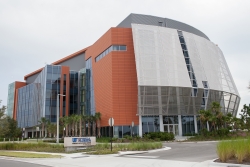 An important example of Bernie’s direct leadership was to champion, in the state Legislature, the construction of the UF Research and Academic Center at Lake Nona. As UF’s first foray into Orlando, with encouragement from next-door-neighbor Sanford-Burnham Medical Research Institute as a scientific partner, this facility is an architecturally striking $56 million, 106,000-square-foot building that is now a hub of activity around pharmacy education and research, infectious disease research and drug development. Through the preeminence program, additional preeminent faculty members are now being recruited to completely fill the available space in what is already a high-performing research center. Collaboration with SBMI has already led to major grant funding in metabolomics. The future is bright for continued collaboration and growth of UF health science programs in Orlando.
An important example of Bernie’s direct leadership was to champion, in the state Legislature, the construction of the UF Research and Academic Center at Lake Nona. As UF’s first foray into Orlando, with encouragement from next-door-neighbor Sanford-Burnham Medical Research Institute as a scientific partner, this facility is an architecturally striking $56 million, 106,000-square-foot building that is now a hub of activity around pharmacy education and research, infectious disease research and drug development. Through the preeminence program, additional preeminent faculty members are now being recruited to completely fill the available space in what is already a high-performing research center. Collaboration with SBMI has already led to major grant funding in metabolomics. The future is bright for continued collaboration and growth of UF health science programs in Orlando.
Another key example of Bernie’s leadership was his garnering of support among the UF Board of Trustees for the Clinical and Translational Science Building and the Medical Education Building, ultimately leading to a specific policy around the financing of new academic buildings at UF in the absence of state construction funding.
The need for the CTRB was clear: We received a competitive construction grant from NIH to house the Institute on Aging; we had just received the NIH Clinical and Translational Science Award; there was the need to move the Clinical Research Center from prime inpatient space in the hospital to outpatient facilities that would be more convenient and functional for research participants; we were creating two new departments — biostatistics and epidemiology — that needed a home; and leases were running out on off-site spaces housing several clinical research programs. Despite this need, because the nation was just emerging from the budget crisis of 2008-2009, there was to be no new state funding for university construction in Florida. The only solution was to supplement the $15 million NIH construction grant with $30 million in bonding.
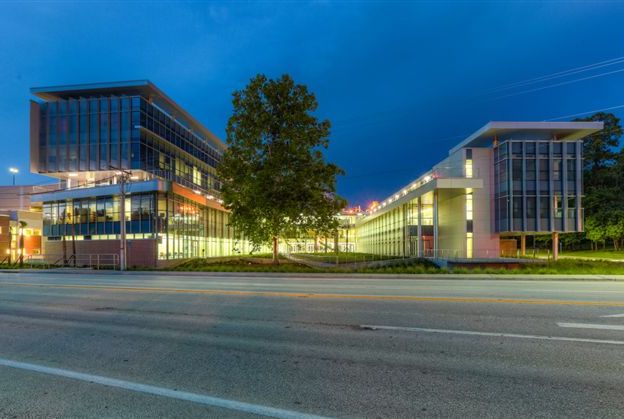 Even though Bernie was rightfully proud that (with a few small exceptions) all of the buildings on the UF campus were paid for, giving great strength to the university’s balance sheet, he knew that continued growth required alternatives to state-funded construction and was satisfied that the funding stream from the indirect cost recovery of clinical research grants would readily cover the bond payments. He therefore apprised the UF trustees of the importance of the project and permission to apply for a $30 million bond was approved by the trustees with enthusiasm. Open since August 2013, the $45 million, 120,000-square-foot LEED-platinum-certified CTRB has a forward-looking design that reflects the spirit of the research contained within. It is now completely filled with funded investigators and research programs. Indeed, our clinical research portfolio is now expanding at a rate such that we need a second CTRB!
Even though Bernie was rightfully proud that (with a few small exceptions) all of the buildings on the UF campus were paid for, giving great strength to the university’s balance sheet, he knew that continued growth required alternatives to state-funded construction and was satisfied that the funding stream from the indirect cost recovery of clinical research grants would readily cover the bond payments. He therefore apprised the UF trustees of the importance of the project and permission to apply for a $30 million bond was approved by the trustees with enthusiasm. Open since August 2013, the $45 million, 120,000-square-foot LEED-platinum-certified CTRB has a forward-looking design that reflects the spirit of the research contained within. It is now completely filled with funded investigators and research programs. Indeed, our clinical research portfolio is now expanding at a rate such that we need a second CTRB!
A similar set of circumstances surrounded the Medical Education Building: tremendous need, partial funding (in this case, through philanthropy), but no state funding on the horizon. Recognizing that similar situations might arise around campus in the future, Bernie worked through the Finance Committee of the Board of Trustees to create a policy around new construction when state funding is not available: At least one-third of the total funds must be cash-in-hand, and a clear and secure funding stream must be demonstrated to make bond payments for the residual amount. 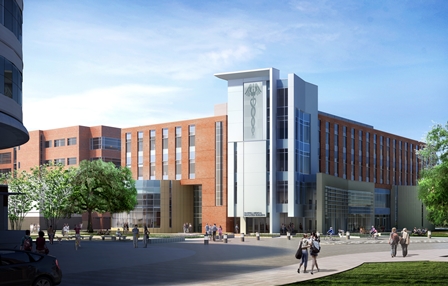 Although state funding is clearly preferred when available, this forward-looking policy can now be applied when circumstances warrant. The George T. Harrell, M.D., Medical Education Building is now being completed for the incoming class of 2015. This building will serve as a gateway to the Health Science Center campus on the south end of Newell Road. The Harrell Building entrance is designed as a tower, mirroring UF’s Century Tower at the north end of Newell Road. Its interior contains a set of signature spaces — circular learning studios, simulation center, team learning rooms, and other learning facilities — that will set a national standard for medical education facilities.
Although state funding is clearly preferred when available, this forward-looking policy can now be applied when circumstances warrant. The George T. Harrell, M.D., Medical Education Building is now being completed for the incoming class of 2015. This building will serve as a gateway to the Health Science Center campus on the south end of Newell Road. The Harrell Building entrance is designed as a tower, mirroring UF’s Century Tower at the north end of Newell Road. Its interior contains a set of signature spaces — circular learning studios, simulation center, team learning rooms, and other learning facilities — that will set a national standard for medical education facilities.
Another key facet of Bernie’s leadership has been his persistent advocacy of a university-centric mindset around our health affairs mission. Through the functional integration of UF Health Shands Hospital with the UF Health Science Center, thus creating the academic health center we now call UF Health, with a parallel process in Jacksonville, he created a bridge from governance to branding.
Behind the scenes, Bernie was a highly influential advocate of the transition from UF&Shands to UF Health. At different venues, I often show the slide below to describe how the evolution in our brand paralleled the evolution in mindset and behavior among the faculty and staff at the Health Science Center and our hospitals:
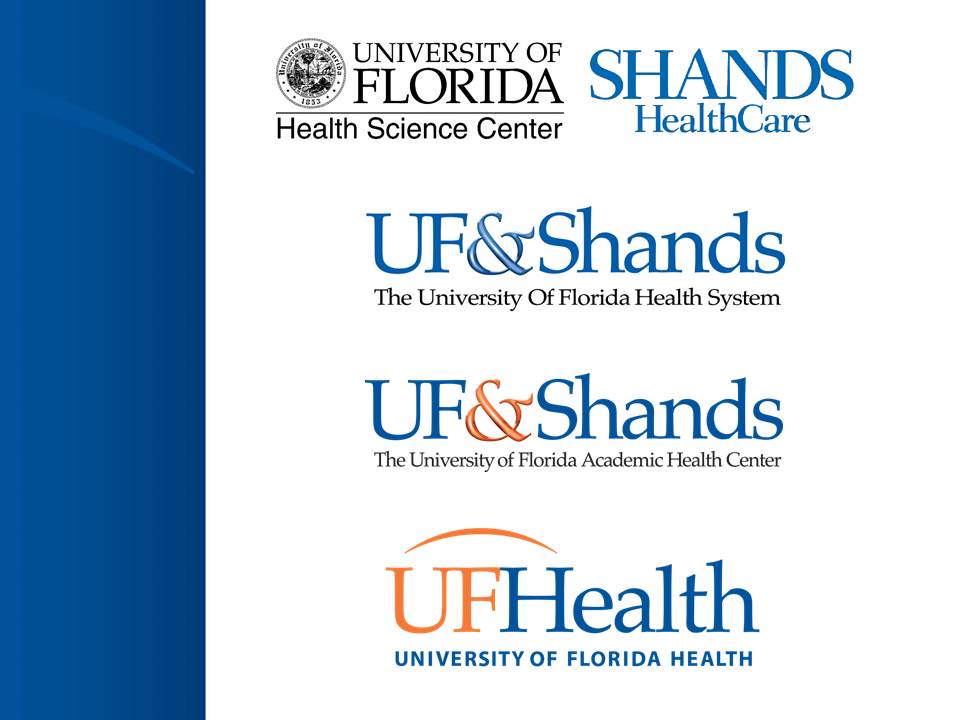
Among the intermediate steps, the nuanced move to the orange ampersand and the change from “University of Florida Health System” to “University of Florida Academic Health Center” was important. For a few years, we “lived” the ampersand, which became more powerful as more and more faculty and staff embodied its meaning. Across time, although it was bittersweet to leave the ampersand behind, the transition to UF Health became inevitable and ultimately welcomed. I can tell you first-hand that it was extremely satisfying for Bernie to finally see that accomplished.
There is no more important set of academic appointments for the academic life of UF Health than the deans of our colleges. Some presidents of large universities do not become personally involved in such appointments, but Bernie was deeply interested in every dean search because of his commitment to academic excellence at the University of Florida. Indeed, each of the HSC college deans has turned over in the past five years, so Bernie and I have had the opportunity to work together closely on these appointments. Through the interview process, but especially after recommendations from the search committees were obtained, Bernie spent significant time and effort making due diligence calls, obtaining information from his national network, and having discussions with UF and UF Health leadership about the strengths and weaknesses of the recommended finalists. While he was always careful not to make final decisions, the effort he has devoted to obtaining key information on candidates, filtered through his vast experience in hiring academic leaders, has been enormously helpful to UF Health in determining these critical appointments. It is a pleasure to work with such an extraordinary team of deans at the Health Science Center, and we at UF Health are indebted to Bernie for his thoughtful and tireless support in helping to assemble such a fine group of academic leaders.
 Isabel Garcia, D.D.S., M.P.H.
Dean, College of Dentistry
(beginning Feb 16, 2015) Isabel Garcia, D.D.S., M.P.H.
Dean, College of Dentistry
(beginning Feb 16, 2015) |
 Michael L. Good, M.D.
Dean, College of Medicine Michael L. Good, M.D.
Dean, College of Medicine |
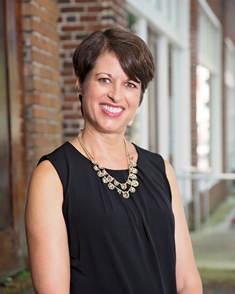 Julie A. Johnson, Pharm.D.
Dean, College of Pharmacy Julie A. Johnson, Pharm.D.
Dean, College of Pharmacy |
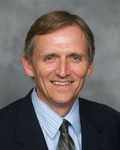 James Lloyd, D.V.M., Ph.D.
Dean, College of Veterinary Medicine James Lloyd, D.V.M., Ph.D.
Dean, College of Veterinary Medicine |
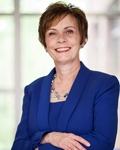 Anna M. McDaniel, Ph.D., R.N., FAAN Dean,
College of Nursing Anna M. McDaniel, Ph.D., R.N., FAAN Dean,
College of Nursing |
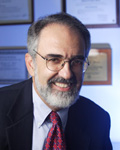 Michael G. Perri, Ph.D.
Dean, College of Public Health
and Health Professions Michael G. Perri, Ph.D.
Dean, College of Public Health
and Health Professions |
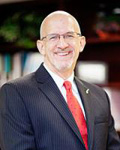 Boyd Robinson, D.D.S., M.Ed.
Interim Dean, College of Dentistry Boyd Robinson, D.D.S., M.Ed.
Interim Dean, College of Dentistry |
 Daniel R. Wilson, M.D., Ph.D., F.A.N.P.A.
Dean, College of Medicine-Jacksonville Daniel R. Wilson, M.D., Ph.D., F.A.N.P.A.
Dean, College of Medicine-Jacksonville |
Under the preeminence initiative of the state legislature, new faculty with substantial records of achievement are being hired across UF, along with enhancement of online education and the core curriculum for undergraduates. A trajectory toward preeminence of the faculty as a whole, however, requires that both existing and new faculty be supported in their scientific and scholarly efforts. The UF Health strategic plan, “Forward Together,” calls for “reaching for excellence” in faculty research. In this light, the preeminence initiative is simply a continuation of a process that has been unfolding for several years. However, without state support, other funding sources were needed. One increasingly important source has been the hospital, but another has been philanthropy.
Working with the UF Health Development Office and the UF Office of Development and Alumni Affairs, Bernie was always available to reach out to donors at important junctures and to close large gifts that supported faculty programs. In special cases, he also allocated funds to this effort. One important example was the creation of a $20 million research program for brain tumor research, spurred by a $10 million lead gift from the Wells Foundation. We obtained a commitment of $5 million from the McKnight Brain Institute, matched by UF. With the promise of an exciting scientific environment and secure financial support, a search committee led by the chair of neurosurgery, William Friedman, M.D., was able to recruit Duane Mitchell, M.D., Ph.D., from Duke University, who in turn has recruited a number of other faculty to his team. In short order, this research group has already attracted a significant portfolio of grants and is conducting first-in-human studies of immunotherapy for brain tumors.
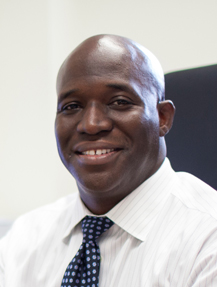
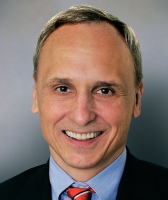
Another example was Bernie’s involvement and forward thinking in creating the Faculty Now program. This initiative was designed to educate and encourage donors to “put their name on knowledge” and provide needed faculty support. While the corpus was growing in the endowment from these gifts, Bernie provided funds to recruit the faculty member “now.” There were 20 Faculty Now professorships. One of the final gifts of this program was a $5 million gift from Earl and Christy Powell to support the ongoing gene-therapy program led by Barry Byrne, M.D., Ph.D. By becoming directly involved in such important philanthropy, Bernie fostered preeminence well before the “official” preeminence initiative.
Lastly, a few words on Bernie’s leadership style and mentorship. I have had the good fortune to work closely with a number of leaders of universities and health centers. What sets Bernie apart is his uncanny ability to grasp quickly the essence of a complex issue and to reach a conclusion on the best strategy or direction. I have heard some refer to this as “instinct,” but in my opinion this term is not accurate and does not capture the phenomenon. Rather, I have come to see this as “principled wisdom.”
Bernie uses his principled wisdom to make decisions that are best for the University of Florida. That is always his true north. Almost always, the interests of UF Health and UF are aligned. Occasionally, factors affecting UF supersede those of UF Health. I understand that, and transmit the logic to the UF Health leadership team as such. We all ultimately benefit when UF is the true north.
Because of this principled wisdom, and also because of his fundamental personality, Bernie is comfortable with delegation. This has led to a distributed leadership model that has benefited not only UF Health, but IFAS, the main UF campus under the provost’s leadership, and the work of UF’s chief operating officer, who is responsible for the key administrative functions of UF. It is principled wisdom that moves Bernie to trust in others, giving them responsibility for their and their organization’s path. There is a balance, however: Bernie is comfortable with delegation yet he always seeks sufficient information to make sure that the course being set is consistent with his overall vision for UF.
In some cases, he will set the direction himself, but in a uniquely “Bernie” way. One example relates to the creation of a new position, “executive vice president for research and education, health sciences.” This began when Bernie observed that in contrast to my first couple of years on the job, when I would often bring forward issues related to research and education, across time I was becoming more focused on the health system. He said, “David, why don’t you review your organization, and see if you need some help.” Over the next several iterations of my weekly meetings with Bernie, I brought in several versions of an organization chart for UF Health, and with his principled wisdom we arrived at the conclusion that I needed someone who would be entirely devoted to research and education at the Health Science Center, across all the colleges and institutes. We conducted a national search and were able to attract Thomas Pearson, M.D., M.P.H., Ph.D., to this position, who has worked tirelessly and effectively in this new role.
Chris Machen has a natural grace and style that not only translates perfectly to her role as UF’s first lady, but also to her role in founding or fostering many projects and initiatives that have benefited UF, UF Health and the community of Gainesville. Some of this work is rooted in her training and 25-year career as a neonatal nurse. This background in the health professions led naturally to her chairing Healthy Gators 2010, in which she lent her visibility to a continuing campaign to promote a healthy body, mind and spirit among members of the UF community. Healthy Gators spearheaded a campuswide tobacco-free policy that took effect in July of 2010, promotes healthy food and healthy eating, and is campaigning for scooter-riding students to wear helmets.
Chris also spearheaded the university’s drive to sustainability in its approach to buildings, transportation and waste. As it has affected UF Health, all of our recent buildings — the UF Health Shands Cancer Hospital, the CTRB, the Emerging Pathogens Institute, the Medical Education Building and the UF Research and Academic Center at Lake Nona, have been constructed to LEED-Gold or LEED- Platinum standards. Moreover, we now have developed a significant recycling program at UF Health and have initiated other changes which allow, in Chris’s words, “UF faculty and staff to act on their best hopes for UF and the environment.”
In Gainesville, Chris has served on the Child Advocacy Board, the Boys and Girls Club Board and the Florida 4-H Board, among other organizations. She has also had a long-time devotion to animal health and veterinary medicine. With local veterinarian Dale Kaplan-Stein (CVM, ‘81), Chris founded and operates a clinic at Gainesville’s St. Francis House to provide care to the pets of low-income residents and the homeless, treating hundreds of pets whose owners had nowhere else to turn.
President and First Lady Bernie and Chris Machen have created a legacy of achievement and inspiration that will influence the future of UF, the city of Gainesville and our state for many decades to come. Bernie concluded his last remarks to the Board of Trustees with these words: “There is an old cowboy expression that says ‘you don’t say goodbye, you just move on down the road.’” It is reassuring to know that Bernie and Chris will remain in Gainesville, taking pleasure in visiting their children and grandchildren around the country, but also spending time at home and continuing to contribute to our community.
Forward Together,
David S. Guzick, M.D., Ph.D. Senior Vice President, Health Affairs President, UF Health
About the author
